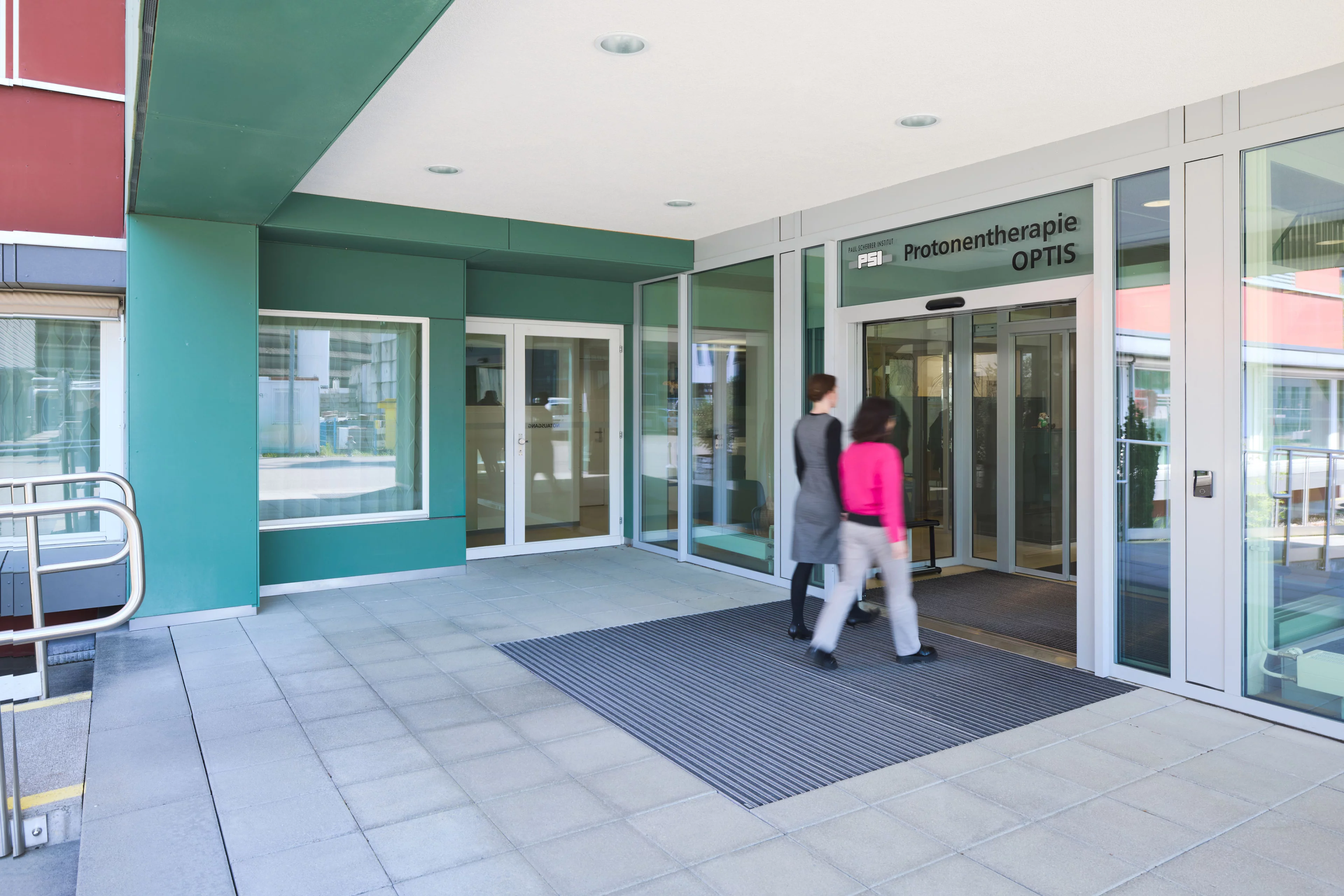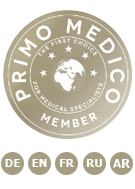This page contains the most important information on proton therapy carried out at PSI, from treatment duration and costs to a list of tumours that we treat here at CPT. This text provides information on the irradiation of deep-seated tumours. Treatment of ocular tumours is not discussed.
Professional competence at all levels
The Center for Proton Therapy CPT works with an expert team of doctors, medical physicists, radiation therapists (RTTs), a nurse, a psycho oncologist and other specialised professionals. Our treatment team is on hand to take care of you before, during and also after therapy if needed.
The CPT maintains intensive cooperation with numerous partner clinics in Switzerland and beyond. Both the Zurich University Clinic (USZ) as well as the Inselspital hospital in Bern offer consultations for proton therapy. Our work is subject to specific quality standards and our facilities are regularly checked by the Federal Office for Public Health (Bundesamt für Gesundheit – BAG).
List of tumour types treated with proton therapy
At PSI, proton therapy is used to treat patients with tumours specified on the tumour-type list published by the Federal Office for Public Health (Bundesamt für Gesundheit - BAG). Compulsory health insurance covers the cost of these. Other types of tumours are only treated at PSI in exceptional cases.
Duration of therapy
A course of proton therapy takes between six to eight weeks. During this time, you or your child will generally receive radiation four to five days per week, excluding the weekends, during which treatment does not normally take place. The overall total number of radiation sessions ranges from 30 to 40. If you or your child are also undergoing chemotherapy, you will still receive radiation on weekdays at PSI. On some days, chemotherapy takes place after a radiation session or on the weekend and is carried out by your university clinic, your oncologist or your cancer specialist.
Outpatient treatment
Treatment of you or your child takes place at PSI on an outpatient basis. You are allowed to return home after each radiation session.
If you live further away and prefer to avoid a daily commute to Villigen, our patient office is happy to organise a furnished flat or hotel room near the PSI on a daily or weekly basis. They are happy to help with these questions and other practical issues concerning accommodation or driving directions. Should it be medically required, you will also be entitled to accommodation in a local hospital close to PSI during your radiation treatment. These include the hospital in Leuggern or the county hospitals in Baden and Aarau. Transport to and from these hospitals will be arranged.
Costs of proton therapy
In many countries, including Switzerland, proton therapy tends to be more expensive nowadays than normal radiation therapy.
For persons covered by Swiss health insurance, the costs of treatment for tumours listed on the tumour-type list of the Federal Office for Public Health (BAG) are covered by the compulsory health insurance.
Treatment costs for patients from the rest of Europe are normally covered by the E112 or S2 form in direct cooperation with the patient’s health insurance provider. These forms are provided by the health insurance companies.
Generally very well tolerated
Radiation itself cannot be felt. Some sensitive organs and body regions can be better protected during proton therapy than during best possible forms of traditional radiation, which also means that there are fewer side effects.
During the weeks over which the radiation sessions take place, patients sometimes feel increasingly tired and listless. This effect is referred to as fatigue. Treatment of a brain tumour may also lead in some cases to temporary dizziness and headaches as well as nausea and vomiting. Hair loss is only experienced when the radiation reaches the hair roots. Hair generallygrows back within a few months of completing treatment.
At this point we do not go into the details of possible side effects or longterm damage since these vary considerably depending on the type of tumour, its location, as well as the patient’s individual situation. In principle, however, such damage can only take place in the parts of the body that lie within the radiation field. There is no damage away from the treated area. Before the start of proton therapy, the attending physician will give a detailed explanation of the kind of side effects that may affect you personally, or your child.
Why are so many radiation sessions necessary?
Before beginning the radiation sessions, radiation oncologists calculate the overall dosage of proton radiation that a patient requires. This dosage is divided into so-called fractions: If a tumour is to be destroyed with an overall dosage of 60 Gray (the measure of energy deposited in the body), every individual radiation session needs to administer one thirtieth of this amount (2 Gray). Four or five days of radiation sessions are followed by a pause. The basic idea behind this fractionated therapy is to completely destroy the genetic material in the cancerous cells so that these cells die off. This requires many sequential radiation sessions. Pausing between sessions allows the surrounding tissue to recover and repair itself. Cancer cells are not as good at repairing themselves. That is why the radiation damage in the tumour accumulates after many sessions and finally destroys the tumour.


